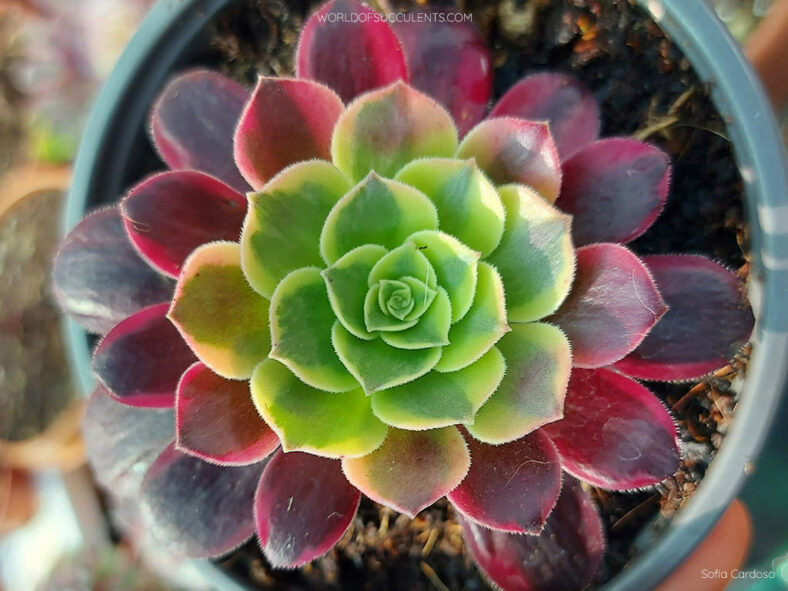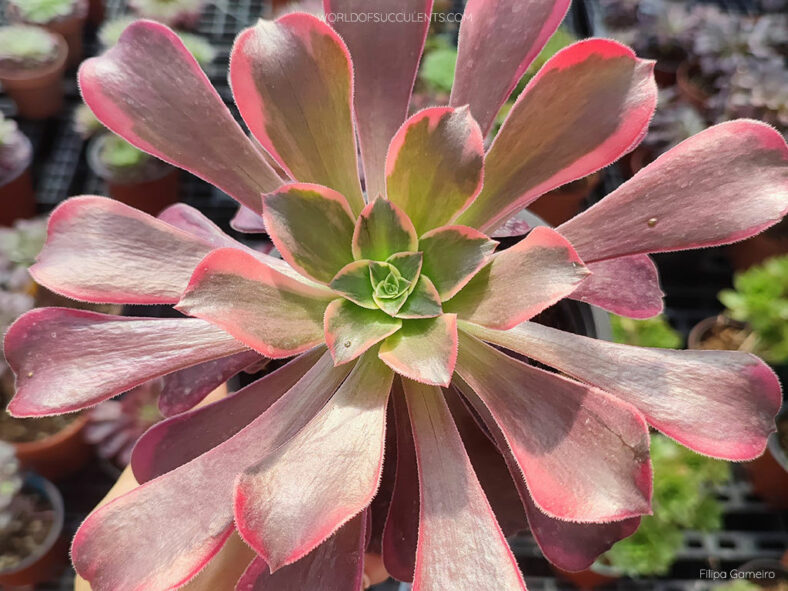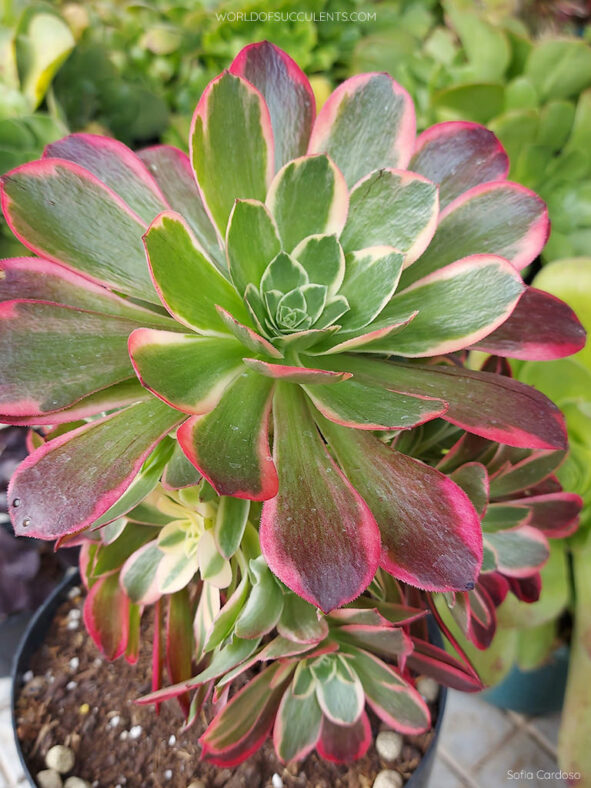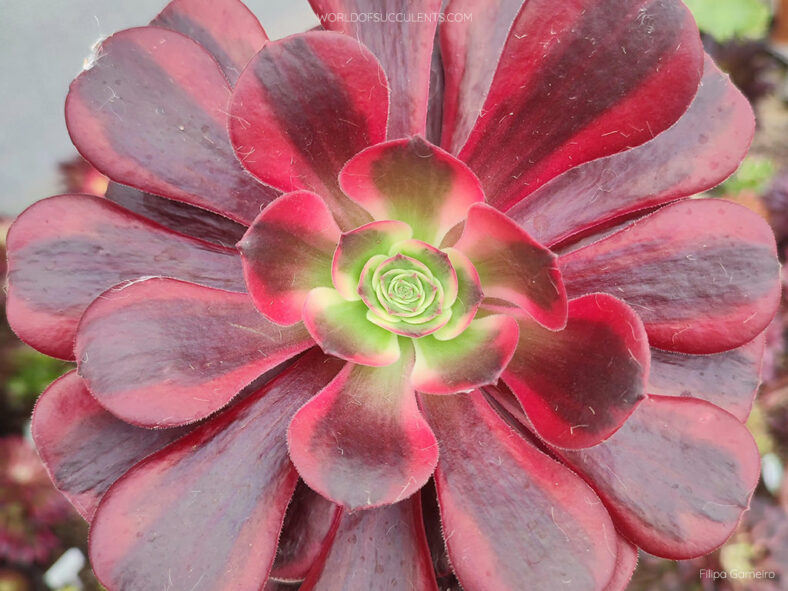Aeonium 'Canary' is a striking plant with vibrant colors. It is easy to grow and care for, readily produces offsets, and quickly develops into a compact shrublet.
Scientific Name
Aeonium 'Canary'
Scientific Classification
Family: Crassulaceae
Subfamily: Sempervivoideae
Tribe: Aeonieae
Genus: Aeonium
Origin
Aeonium 'Canary' is thought to be a mutation of Aeonium 'Medusa'. The origin is unknown.
Description
Aeonium 'Canary' is a small succulent shrub with branches that support stunning rosettes of variegated leaves. The rosettes can reach a diameter of 8 inches (20 cm). The colors of the leaves change with the seasons and growing conditions. During the cooler months or in lower light conditions, the leaves display cream to pale yellow variegation along the edges, with the central part being lime green. As spring arrives and light levels increase, the outer variegation changes to pink, and the central portion deepens to shades of magenta and burgundy.
To date, flowering has not been observed.

How to Grow and Care for Aeonium 'Canary'
Light: Aeonium 'Canary' thrives in full sun to partial shade, but in summer, light shade may be necessary, especially during the hotter afternoon hours. When growing indoors, ensure it receives as much bright, indirect light as possible to prevent the plant from becoming leggy and stretched.
Soil: Unlike most succulents, this plant requires sandy loam or regular potting soil amended with perlite. Avoid growing it in premade soil mixes designed for succulents, as it needs more moisture than these mixes typically provide.
Temperature: Aeonium 'Canary' does not like hot or dry weather, so it may go dormant in summer. It grows best in USDA Plant Hardiness Zones 10a to 11b, with average minimum winter temperatures ranging from 30°F to 50°F (-1.1°C to 10°C).
Watering: Water the plant thoroughly in spring and fall, allowing the soil to dry before watering again. During the winter, water it more sparingly. Although this plant requires more water than most succulents, too much moisture can lead to root rot. Stop watering except in arid conditions during its summer dormancy.
Fertilizing: During the growing season, apply a water-soluble fertilizer diluted to half the recommended strength to stimulate growth and improve the plant's appearance.
Repotting: If Aeonium 'Canary' grows in a container, repot it every two to three years during the spring. Choose a container with drainage holes to prevent root rot.
Propagation: This plant is easy to propagate by stem cuttings. Take cuttings during the growing season and allow the cut ends to dry for several days before planting.
Learn more at How to Grow and Care for Aeonium.
Toxicity of Aeonium 'Canary'
Aeonium 'Canary' is considered non-toxic, so growing around children and pets is safe.
Links
- Back to genus Aeonium
- Succupedia: Browse succulents by Scientific Name, Common Name, Genus, Family, USDA Hardiness Zone, Origin, or cacti by Genus
Photo Gallery
Click on a photo to see a larger version.


